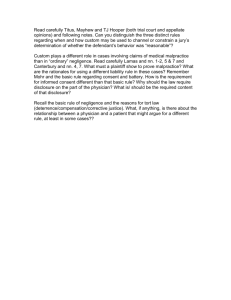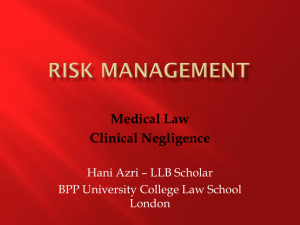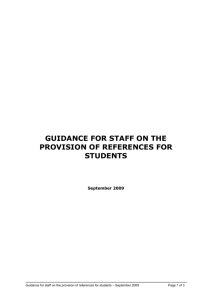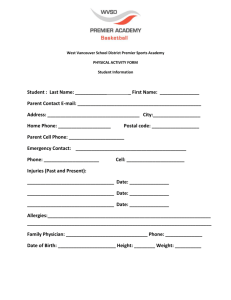CH 15 – Legal Issues Associated with Teaching Physical Education
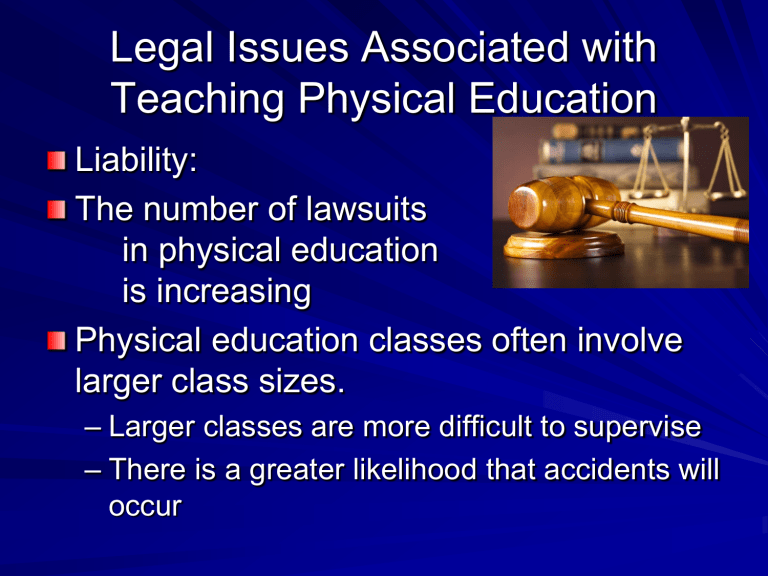
Legal Issues Associated with
Teaching Physical Education
Liability:
The number of lawsuits in physical education is increasing
Physical education classes often involve larger class sizes.
– Larger classes are more difficult to supervise
– There is a greater likelihood that accidents will occur
Why Teachers Are at Risk for
Liability
The role of a teacher is high profile and has high responsibilities
Teachers are recognized as professionals with certifications.
Schooling and training should be consistent with national standards
Acts of Omission
Actions purposefully omitted by you that lead to a situation with negative consequences are called acts of omission.
– Example: not supervising activities
These actions would be deemed to be significant and necessary to carry out professional duties.
Acts of Commission
Actions committed by you that lead to situations with negative consequences are called acts of commission.
– Example: threatening students with harm
These actions would be deemed to be significant, unnecessary, and inappropriate from a professional teacher.
Negligence
Level of negligence is determined in lawsuits
What part did the teacher play in attempting to avoid conditions that led to injury?
What role did the teacher play in sufficiently or improperly providing adequate care after an injury?
Did the teacher act contrary to professional standards?
Parts to Negligence
Duty
Breach of duty
Cause
Damage
Must have all four parts to be negligent
Typical Areas of Negligence in
Physical Education
Supervision
Instruction
Classroom environment
First aid emergencies
Transportation
Rules of Thumb for Avoiding
Negligence Claims
Use a common sense approach
Be aware of effective guidelines practiced by other professionals in the field.
Follow procedures and practices that are addressed in national organization guidelines.
Follow procedures and practices that are presented in the text.
Teacher Supervision
Determine whether students are properly and safely executing activities.
Maintain an active, ongoing process of supervision throughout the activity.
Encourage peer supervision as a supplement to teacher supervision.
Role of Instruction
Teacher liability can be tied directly to students not being properly or sufficiently instructed before performing an activity.
Students should not be asked to perform a movement when they lack personal capability judgment.
Role of Instruction (Cont.)
Proper instruction must be given to students concerning proper protocols and procedures for setting up, using, and taking down equipment.
Instruction dealing with proper safety should be simply stated.
Classroom Environment
Teachers must be vigilant and aware of potentially dangerous conditions.
There may be discrepancies between environmental conditions from day to day
Space students accordingly to decrease potential incidents.
Use equipment only in the manner for which it was designed.
First Aid Emergencies
Moving students are more at risk of injury than sedentary students.
The teacher should be expected to provide appropriate assistance to an injured student
First aid – treatment for injury or sudden illness before the injured person has access to hospital care or a treatment facility.
First Aid Emergencies (Cont.)
Teachers are trained in first aid, but should hold current first aid certificates.
First aid procedures should be developed with colleagues and school staff
– Procedures should be permanently displayed throughout the school.
– They should be incorporated into your class objectives.
First Aid Emergencies (Cont.)
Be aware of all students with pre-existing conditions.
In the event of an incident, write a detailed report
– Include a brief rationale of what prevention measures were in place.
– Be as specific and clear as possible.
Transportation
Transportation to outside facilities for school activities raises several issues.
– Liability is a concern.
– Follow school policies, procedures, and practices at all times.
– Obtain parental consent forms.
New Curricula Risks
New activities may lead to new dangers, liabilities, and outcomes.
– Example: in line-skating
– Trial and error approach
– Common sense approach
Identify potential physical limitations and danger.
New Curricula Risks (Cont.)
Stress proper preparation.
Maintain strict adherence to rules.
Show active teacher awareness and presence at all times during activities.
Be aware of national standards.
Situations where physical education teachers were accused of negligence and taken to court
1.
2.
3.
4.
Not properly supervising locker room and facilities
Leaving activity room doors open and unsupervised.
Giving your keys to students.
Having students move equipment that they cannot handle easily.
Situations where physical education teachers were accused of negligence and taken to court
5.
6.
7.
8.
Permitting horseplay.
Placing a student in the role of sole supervisor of a class.
Not establishing safety rules before class activity.
Not becoming involved in resolving conflict.
Situations where physical education teachers were accused of negligence and taken to court
9. Neglecting to warm up students properly before activity.
10. Physically over-extending a student.
11. Ignoring prescribed curriculum.
12. Bypassing fundamental skills.
13. Not continually reviewing and updating a safety checklist
Situations where physical education teachers were accused of negligence and taken to court
14.
Not having a checklist.
15.
Not having an emergency plan.
16.
Permitting activity on a wet, slippery floor.
17.
Not providing special attention to students with special needs.
18.
Leaving unnecessary equipment in the way during activity.
Situations where physical education teachers were accused of negligence and taken to court
19.
Permitting students to wear inappropriate shoes or attire.
20.
Using correct equipment improperly.
21.
Participating in improper areas.
22.
Using an inadequately lighted class area.
23.
Hiring unqualified personnel.
24.
Not informing proper school personnel of first aid procedures.
Situations where physical education teachers were accused of negligence and taken to court
25. Not maintaining written records of objectives, incident reports, etc.
26. Not posting safety rules in conspicuous places.
27.
28.
Failing to check equipment on a regular basis.
Testing students’ abilities before teaching necessary skills.
Situations where physical education teachers were accused of negligence and taken to court
29.
Permitting inappropriate running and jumping in hazardous conditions.
30.
Not maintaining awareness of legal issues.
Your Turn
What new curriculum activities would you like to introduce into your physical education program?
What sorts of liabilities would you have to consider.
Parental Consent
Parental consent is sought when activities introduce conditions that may pose added risk above that which could be assumed.
This practice can be problematic:
– May raise high degrees of alarm in parents
– May raise questions concerning parent6s signing away the right to sue.
Ensuring Success with Parental
Consent
Communicate directly with parents.
Provide reluctant parents with a list of objectives and benefits to the student.
Explain how potential problems have been identified and describe proposed solutions.
Ensuring Success with Parental
Consent (Cont.)
Describe safety issues and procedures.
This information can all be included in a letter to the parents accompanying the consent form.
Willful and Wanton Conduct
Willful and wanton conduct involves a more serious legal situation
– Unjustifiable actions taken deliberately with the intent to cause harm.
– It carries a higher standard of proof.
This situation can be career ending and lead to financial ruin.
Additional Areas of Liability
Misunderstandings between teacher and students
Inappropriate practices:
– Sexual harassment and misconduct
– Exercise as punishment
– Title IX
Title IX
1.
2.
3.
Physical education classes may NOT be conducted separately nor participation required or refused based on gender.
Students may be grouped by ability.
Students may be separated by gender for participation in wrestling, boxing, rugby, ice hockey, football and other sports where the major purpose of the sport is body contact.
Title IX (Cont.)
When a single standards for skill measurement is used, and this adversely impact on one sex, different standards without gender bias must be used.
